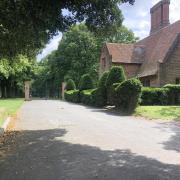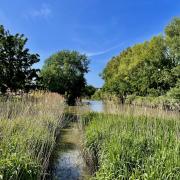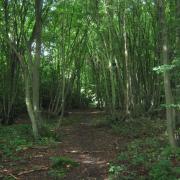Known as ‘the elder Pitt’, ‘Pitt the Elder’, or the ‘Great Commoner’, he shouldn’t be confused with Pitt the Younger, or if you believe TV's Blackadder the Third,‘Pitt the Even Younger’. I’m talking, of course, about William Pitt, 1st Earl of Chatham (1708-78), who became rooted in Kent.
An orator and statesman-to-be, Pitt was the younger son of Robert Pitt from Cornwall, but was born in Westminster, an apposite place to emerge considering his destiny. Educated at Eton and Trinity, Oxford, he became a cornet in the Royal Horse Guard, or Blues, in 1731, and come 1735 had entered Parliament via the family’s notorious ‘rotten borough’ of Old Sarum; basically, a shoe-in.

Pitt declared his loyalties early, backing Frederick, Prince of Wales, eldest son and heir of George II, who was at loggerheads with the king. Frederick predeceased his dad by approaching a decade, so never plonked his posterior on the throne, although his son did: the future George III. Pitt became leader of the younger ‘Patriot’ Whigs (Liberals) and launched into determined opposition to the king’s ascendant statesman, Robert Walpole, who’s regarded as our first ‘de-facto’ Prime Minister, with his 1721-42 spell as leader a lengthy stint that straddled the reigns of the first two Georges.

After Walpole was ousted the king was obliged to admit Pitt to the so-called ‘Broad-bottom’ administration in 1746. He became Paymaster-general but resigned in 1755. It wasn’t all bad, though, as the Duchess of Marlborough left Pitt £10,000 in 1744 (I'm thinking maybe having friends in high places is handy, but sadly it's a boost that's never come my way). On November 16 1754 Pitt married Hester Grenville and immediately began scouring the countryside for a home away from, but within easy reach of, London. He firstly leased, then purchased, Hayes Place, the home of John Harrison, in the Kent village of Hayes. Pitt had stayed there during the previous tenancy of Edward and Elizabeth Montague, so felt at home. As owner he’d try and stay at Hayes a few nights each week. He soon had the builders in too,thanks to his plans to demolish and replace the house.He bought adjacent land and properties, erecting a 13 foot wall, and badgering neighbours to remove trees impairing his view. He also got the Beckenham road rerouted as it was too near his pile. He sounds like a nightmare.

In 1756 Pitt became nominally Secretary of State but effectively the Premier. Self-confidence was not an issue: ‘I know that I can save this country and that no-one else can’ (November 1756). He wasted no time implementing his own foreign policy plan, namely maintaining war with the French, raising the militia and beefing up our navy. The king did for him, though, his loathing of Pitt seeing William resign in April 1757, only to be recalled to office in the June following a clamour from the public. His resumed war policy was highly successful during the Seven Years’ War against the French, a war with global reach that has prompted some to dub it the first true world war. Pitt presided over the war that made Britain, for better or worse, the supreme imperial power. In September 1759 James Wolfe (the Kent hero from Westerham profiled in KL earlier this year) dined with Pitt at Hayes. It was the day before he departed for North America and the capture of Quebec that saw Wolfe perish in the moment of victory a la Nelson. Wolfe wouldn’t be the last notable figure visiting Hayes, another being Benjamin Franklin.
By 1761 Pitt’s new house was taking shape, while Hester had produced three sons and two daughters. One of the siblings was, of course, the younger Pitt (born 1759) who’d become the UK’s youngest PM aged 24 and have his own Kentish-cottage bolthole in Westerham (yes, Westerham again!). The entries for the two eldest sons, John (1756) and William are recorded in Hayes church’s baptismal register. Politics is fickle, though, and the architect of success didn’t last, forced out in 1761 when a majority of his cabinet vetoed war with Spain. Pitt was plonked on a pension of £3,000 per annum while his wife was created Baroness Chatham (she was the sister of George Grenville, who would be PM in 1763). Pitt was further enriched in 1765: a legacy from Sir William Pynsent’s estate benefited him to the tune of £3,000 per annum with a country estate in Somerset thrown in to the bargain. Pitt promptly sold Hayes to Thomas Walpole and headed south-west.

Pitt made another comeback in 1766, forming another ministry, acting as privy seal, and sitting in the Lords as Viscount Pitt and Earl of Chatham. The pull of Hayes was too great, meanwhile, and he persuaded Walpole to sell his old home back to him in 1767. Once again, he set about the grounds, planting trees and diverting rivers (as you do). He was suffering from ill-health now, though, including depression and gout, and resigned in 1768 for the final time. Pitt continued haranguing from the sidelines, criticising harsh Government policy towards the American colonies and urging conciliation. He said: ‘You cannot conquer America’ ; he was right. Later, however, when the government was considering seeking peace on any terms, Pitt raged in the Lords on April 2 1778 as he couldn’t countenance American independence. It was Pitt’s last major contribution. He was a sick man. There had been one happy event three to four years earlier: the marriage of eldest daughter, Hester, to Charles, Lord Viscount Mahon, which occurred at Hayes Place.
The elder Pitt died at Hayes on May 11 1778. He was honoured with a public funeral, a memorial in Westminster Abbey, and by the Government paying off his debts and bestowing a pension on his descendants. He was an imposing figure with an oratorical voice, an irreproachable character and moral compass, but also a haughtiness that alienated many and even tried the patience of his friends. There’s a plaque in Hayes Street, Hayes, commemorating the home of Pitt the Elder, and birthplace of Pitt the Younger, and a monument to both men in Hayes church, unveiled in 1929.









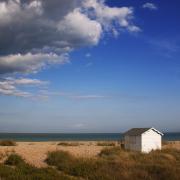



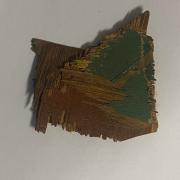



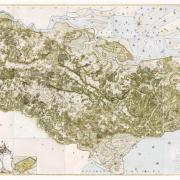
![The torchlit Wassail procession makes its way to the New Ash Green Community orchard [Photo courtesy of New Ash Green Woodlands Group]](/resources/images/128x89/1x/17558355.jpg)
![The torchlit Wassail procession makes its way to the New Ash Green Community orchard [Photo courtesy of New Ash Green Woodlands Group]](/resources/images/180x180/1x/17558355.jpg)

